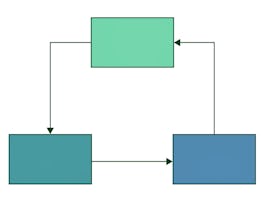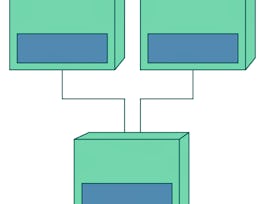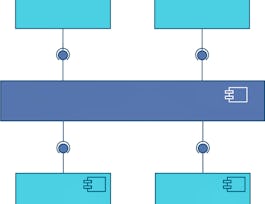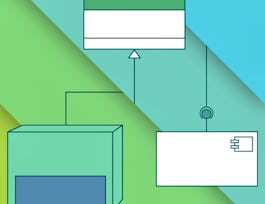This course takes Java beginners to the next level by covering object-oriented analysis and design. You will discover how to create modular, flexible, and reusable software, by applying object-oriented design principles and guidelines. And, you will be able to communicate these designs in a visual notation known as Unified Modelling Language (UML).


Object-Oriented Design
This course is part of Software Design and Architecture Specialization
Taught in English
Some content may not be translated

Instructor: Kenny Wong
117,509 already enrolled
Included with 
Course
(2,276 reviews)
94%
Skills you'll gain
Details to know

Add to your LinkedIn profile
7 quizzes
Course
(2,276 reviews)
94%
See how employees at top companies are mastering in-demand skills

Build your subject-matter expertise
- Learn new concepts from industry experts
- Gain a foundational understanding of a subject or tool
- Develop job-relevant skills with hands-on projects
- Earn a shareable career certificate


Earn a career certificate
Add this credential to your LinkedIn profile, resume, or CV
Share it on social media and in your performance review

There are 4 modules in this course
Good software design begins before coding. After establishing the initial software requirements, design practices involve two main activities: conceptual design and technical design. In this module, you will realize the importance of design and object-oriented thinking, and learn how to design software using techniques like CRC cards.
What's included
6 videos9 readings4 quizzes
Best software design practices have evolved alongside programming languages. Today, all developers should be familiar with abstraction, encapsulation, decomposition, and generalization, which are fundamental principles in object-oriented design. You will learn all of these principles and how they are expressed in Java and communicated visually in Unified Modelling Language.
What's included
11 videos4 readings1 quiz2 peer reviews
Additional design principles will help you to create code that is flexible, reusable, and maintainable. In this module you will learn about coupling and cohesion, separation of concerns, information hiding, and conceptual integrity. You will also learn to avoid common pitfalls with inheritance, and ways to express software behavior in UML.
What's included
8 videos6 readings1 quiz4 peer reviews
In the previous modules you were introduced to object-oriented analysis and design, object-oriented modeling, and design principles. To cement your understanding of this material, you created a UML class diagram from an example Android code base, and used your understanding of the code base to make sequence and state diagrams to model its behavior. Now, in the final module of the course, given a description of new functionality and an updated UML class diagram, you will implement the updated design into the Android code base. After completing this development task, you will be ready to complete the final exam.
What's included
4 readings1 quiz1 peer review
Instructor

Offered by
Recommended if you're interested in Software Development

University of Alberta

University of Alberta

University of Alberta

University of Alberta
Why people choose Coursera for their career




Learner reviews
Showing 3 of 2276
2,276 reviews
- 5 stars
76.21%
- 4 stars
18.60%
- 3 stars
3.37%
- 2 stars
0.70%
- 1 star
1.09%
New to Software Development? Start here.

Open new doors with Coursera Plus
Unlimited access to 7,000+ world-class courses, hands-on projects, and job-ready certificate programs - all included in your subscription
Advance your career with an online degree
Earn a degree from world-class universities - 100% online
Join over 3,400 global companies that choose Coursera for Business
Upskill your employees to excel in the digital economy
Frequently asked questions
Access to lectures and assignments depends on your type of enrollment. If you take a course in audit mode, you will be able to see most course materials for free. To access graded assignments and to earn a Certificate, you will need to purchase the Certificate experience, during or after your audit. If you don't see the audit option:
The course may not offer an audit option. You can try a Free Trial instead, or apply for Financial Aid.
The course may offer 'Full Course, No Certificate' instead. This option lets you see all course materials, submit required assessments, and get a final grade. This also means that you will not be able to purchase a Certificate experience.
When you enroll in the course, you get access to all of the courses in the Specialization, and you earn a certificate when you complete the work. Your electronic Certificate will be added to your Accomplishments page - from there, you can print your Certificate or add it to your LinkedIn profile. If you only want to read and view the course content, you can audit the course for free.
If you subscribed, you get a 7-day free trial during which you can cancel at no penalty. After that, we don’t give refunds, but you can cancel your subscription at any time. See our full refund policy.

